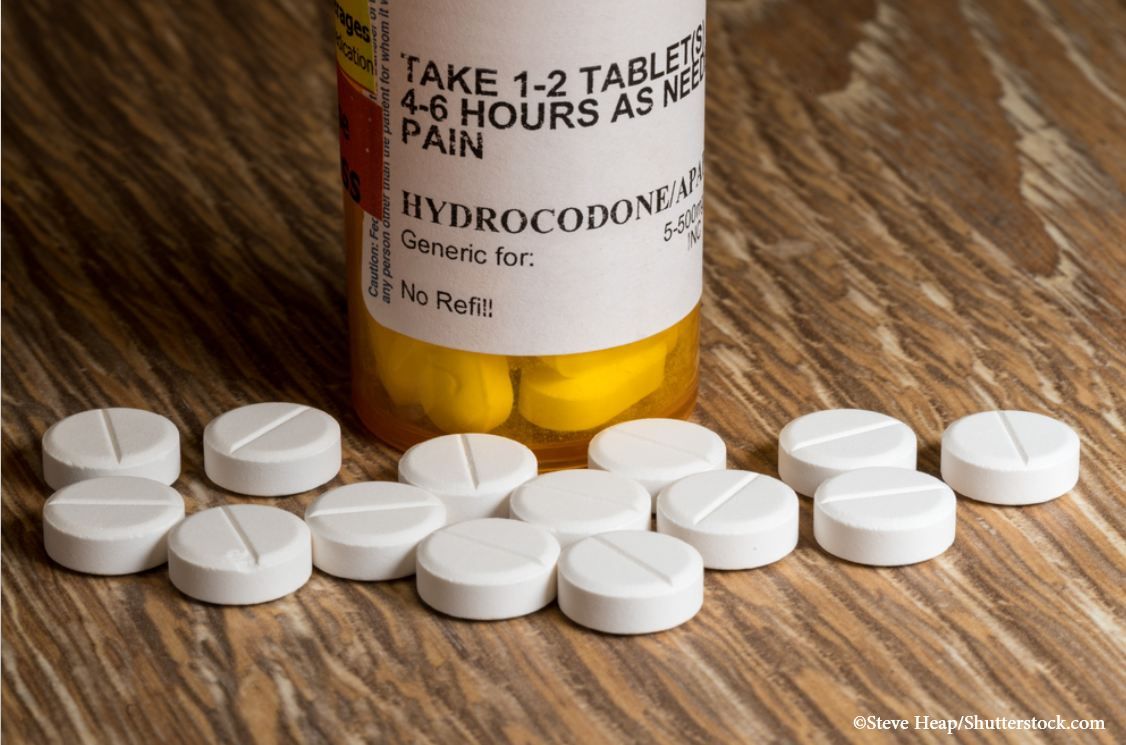- Clinical Technology
- Adult Immunization
- Hepatology
- Pediatric Immunization
- Screening
- Psychiatry
- Allergy
- Women's Health
- Cardiology
- Pediatrics
- Dermatology
- Endocrinology
- Pain Management
- Gastroenterology
- Infectious Disease
- Obesity Medicine
- Rheumatology
- Nephrology
- Neurology
- Pulmonology
Opioids for Migraine Headache? It Depends
A family physician with expertise in headache treatment makes the case for appropriate use of opioids in some patients.
©Steve Heap/Shutterstock.com

In today’s world of heightened scrutiny of opioid prescribing, many clinicians are reluctant to prescribe these agents for headache patients. This concern is appropriate but for the right patient, opioids can be a useful rescue for a severe migraine or cluster headache attack or may be an option for chronic treatment in a refractory chronic cluster or migraine patient when nothing else works.
First: Is an opioid an option?
Responsible opioid prescribing (for pain from any source) begins with careful patient selection. Patients should be screened for their vulnerability to addiction. Risk factors include those with prior substance or prescription drug abuse, patients with comorbid psychiatric conditions including depression and bipolar disorder, and those with a family history of substance or prescription abuse. There are a number of screening tools available that are suitable for the primary care setting including the Opioid Risk Tool (ORT)1 which is completed by the patient and is easily scored in the busy primary care office.
In the case of a headache patient for whom an opioid may be under consideration, a thorough history can reveal past treatments that were ineffective or poorly tolerated. The history may identify also medical conditions such as cardiovascular or peripheral vascular disease that may preclude the use of standard acute migraine treatments such as the triptans and needs to be taken into account.
If the opioid is on board …
If the patient is already taking a an opioid such as hydrocodone for rescue of a severe migraine attack, then the quantity currently needed for 1 month is useful information. For example, if the migraine or cluster headache patient only needs 30 tablets of hydrocodone 5 mg over a 3- to 6-month period, a primary care provider may be comfortable taking over this prescription. Before writing the first prescription, it is essential to access the state’s drug monitoring program and compare the patient’s existing record to what is being stated about quantity. Past records should be reviewed for additional information. In California, where I practice, it is mandatory to access the drug monitoring program prior to any first-time prescription for an opioid and every 4 months thereafter.
Next: Non-drug options, documentation
Non-drug options
Keep in mind that for both acute and chronic treatment of migraine and cluster headaches there are many good non-narcotic treatment options. Those options should be thoroughly explored because opioids even when used as prescribed can lead to medication overuse headache, allodynia, and hyperalgesia. Standard acute and preventive non-narcotic treatment may not work as well in the presence of medication overuse headache.
Be skeptical of any patient who states “Nothing works except a narcotic/opioid for my headaches.” Find out if they have tried newer treatments like onabotulinumtoxin A (ie, Botox) for chronic migraine, the new CGRP monoclonal antibody category for prevention of migraine, or the noninvasive neurostimulators like the Cefaly or SpringTMS device, or the GammaCore noninvasive vagal nerve stimulator (approved for migraine and cluster headache). Patients reluctant to try new treatment options, in my opinion, should not be given refills on their opioid prescriptions. Refusal to try promising non-opioid treatment is a red flag in my headache-focused practice.
Document, document, document
If the decision is made to prescribe opioids for a headache patient, management should proceed as it would for treatment of any pain condition. An opioid contract should be signed by the patient and on file. Documentation of appropriateness of continued opioid treatment should be done at each follow-up visit. A practical way to assess and detail appropriateness is by incorporating answers to questions on the “4 As”2 in the clinic note. This tool was created by Dr. Steven Passik, a psychologist with many years of experience in treating pain. The 4 As are:
1. Analgesia - is the patient getting relief as a result of the opioid?
2. Activity - how is the patient’s activity level or functionality as a result of the opioid?
3. Adverse effects - any side effects like sedation or constipation as a result of the opioid?
4. Aberrant behavior - is there any evidence of aberrant behavior with the opioid?
Documenting that the state’s prescription data base was accessed and no suspicious activity seen can be a useful part of the clinical note. I want to see that the patient is only getting the opioid from my office and is filling it at only one pharmacy.
Closing thoughts
I feel that the pendulum has swung too far against responsible opioid prescribing by the primary care provider. I think opioids can be useful in a small percentage of headache patients for whom non-opioids have been tried and do not provide adequate relief and return to function.
Providers need to know their comfort level in prescribing opioids for the headache patient. Screening tools such as the ORT can be used to assess a patient’s vulnerability to addiction prior to prescribing an opioid for the first time. Once a decision is made to prescribe an opioid, careful documentation using the “4 As” is advised on each follow-up visit.
Numerous review articles addressing use of opioids in headache management have been published in the journal Headache. Several citation are provided below3,4 for those wanting additional information on using opioids in the headache patient.
References:
1. Opioid risk tool for narcotic abuse. MDCalc website. https://www.mdcalc.com/opioid-risk-tool-ort-narcotic-abuse. Accessed Sept 24, 2018.
2. Passik SD, Weinreb HJ. Managing chronic nonmalignant pain: overcoming obstacles to the use of opioids. Adv Ther. 2000;17:70-83.
3. Levin, M. Opioids in headache. Headache. 2014;54:12-21.
4. Rothrock, JF. Treatment-refractory migraine: the case for opioid therapy. Headache. 2008;48:850-854.
